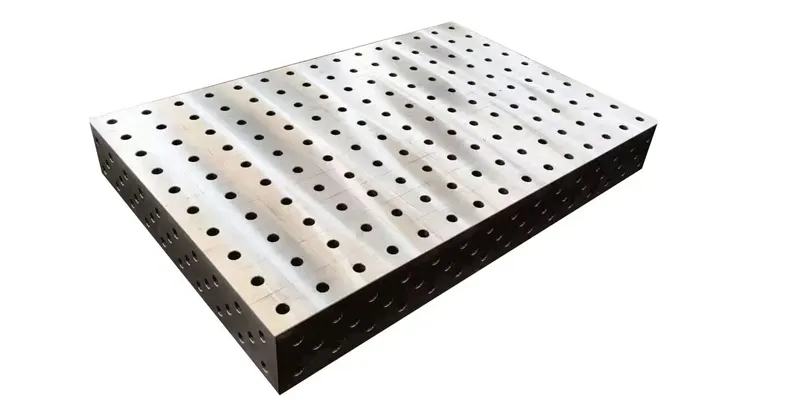Everything You Need To Know To Find The Best 3D Welding Table
When it comes to finding the best 3D welding table, several factors come into play to ensure you make the right choice. Firstly, consider the material used in construction. High-quality welding tables are typically made from sturdy materials like steel or cast iron, ensuring durability and stability during welding processes. Additionally, look for tables with precision-machined surfaces to guarantee flatness and accuracy in your work.
Material Quality and Construction
The material quality of a 3D welding table is paramount for its performance and longevity. Steel and cast iron are popular choices due to their strength and resistance to heat and deformation. Steel tables offer excellent durability and are often more affordable, making them suitable for various welding applications. On the other hand, cast iron tables provide superior stability and dampening properties, reducing vibrations during welding processes. When assessing material quality, prioritize tables with thick and robust construction to withstand heavy loads and repeated use without warping or bending.
Surface Precision and Flatness
The surface precision and flatness of a welding table directly impact the accuracy of your work. A flat and level surface ensures consistent welds and prevents distortion in the final product. Look for tables with precision-machined surfaces, preferably with tolerances of less than 0.001 inches per foot. This level of accuracy is crucial, especially when working on intricate or detailed projects that require precise alignment and positioning. Additionally, consider tables with modular fixturing systems that allow for versatile setups and easy customization to accommodate various welding requirements.

Stability and Rigidity
Stability and rigidity are essential qualities of a welding table that contribute to its overall performance. A stable table minimizes vibrations and movement during welding, resulting in cleaner and more precise welds. Tables with sturdy legs and robust support structures offer enhanced stability, ensuring steady operation even when handling heavy workpieces or applying significant welding forces. Additionally, consider tables with adjustable leveling feet to compensate for uneven floors and provide a stable working platform in any environment.
Versatility and Adaptability
The versatility and adaptability of a welding table can significantly impact your productivity and workflow efficiency. Choose tables with a modular design that allows for easy integration with accessories such as clamps, vices, and tooling fixtures. This flexibility enables you to adapt the table to suit different welding techniques and project requirements quickly. Furthermore, look for tables with integrated features like grid patterns, T-slots, and mounting holes, which facilitate precise workpiece positioning and securement. By investing in a versatile welding table, you can streamline your workflow and tackle a wide range of welding tasks with ease.
Conclusion
In conclusion, finding the best 3D welding table requires careful consideration of various factors, including material quality, surface precision, stability, and versatility. By prioritizing tables with durable construction, precision-machined surfaces, and robust support structures, you can ensure optimal performance and reliability in your welding operations. Additionally, choosing a table with versatile features and modular design capabilities will enhance your productivity and enable you to tackle diverse welding tasks efficiently. Ultimately, investing in a high-quality welding table is essential for achieving consistent and professional results in your welding projects.
- Previous: None
- Next: None


